by Ruvani Jayaweera, Lilian Odhoch, Juliet Nabunje, Clemen Oduor, Carmel Zuniga, Bill Powell, Wyclife Barasa, Flavia Aber, Beatrice Nyalwal, Yohannes Dibaba Wado, Ramatou Ouedraogo, Jessica Kakesa, Tamara Fetters
https://www.thelancet.com/journals/eclinm/article/PIIS2589-5370(25)00132-4/fulltext
SUMMARY
Background: Access to abortion is a fundamental human right. The need for abortion services is amplified in complex humanitarian emergencies. However, most humanitarian agencies do not provide abortion services. There is a lack of data on the direct experiences of abortion of those living in displacement. This study aimed to describe abortion practices, safety, and incidence in two refugee settings.
Methods: Between March and October 2022, we surveyed 1201 women and girls with recent abortion experiences (past 5 years) from Bidibidi Refugee Settlement, Uganda, and Kakuma Refugee Camp, Kenya, using respondent-driven sampling (RDS). Participants completed an interviewer-administered survey. Population-based estimates of abortion experiences were weighted using the RDS-II estimator to account for the sampling design. We used the sequential sampling population size estimation method to estimate annual abortion incidence. We also conducted a health facility assessment of 27 facilities (16 in Bidibidi, 11 in Kakuma) to describe the availability of facility-based abortion services in these communities.
Findings: Among those with an abortion in the past 5 years, the most common methods of abortion were traditional herbs (81% in Bidibidi, 45% in Kakuma) and non-medication abortion pharmaceuticals such as painkillers and antimalarials. Few participants reported using WHO-recommended methods of abortion (mifepristone in combination with misoprostol, misoprostol alone, or manual vacuum aspiration). Self-reported morbidity was high. Nearly a quarter reported avoiding seeking post-abortion care. The estimated annual abortion rate was 52 per 1000 in Bidibidi (95% simulation interval 20–106) and 55 per 1000 in Kakuma (95% simulation interval 19–119). Only 5 of 27 health facilities (1 of 16 in Bidibidi, 4 of 11 in Kakuma) reported providing safe abortion services. 15 of 16 in Bidibidi and 9 of 11 in Kakuma reported providing post-abortion care.
Interpretation: Refugees in these two contexts have little access to WHO-recommended methods of abortion, and the need for safe abortion services is high.
Research in context — evidence before this study: Access to abortion information, support, and services is critical to ensuring the reproductive autonomy of individuals in humanitarian settings. However, safe abortion services are routinely excluded from reproductive health service provision in these settings despite the inclusion of safe abortion care as an essential service in globally recognized guidance on life-saving sexual and reproductive health care for humanitarian crises. Qualitative research has found that without access to safe abortion care, women living in humanitarian settings often resort to unsafe and/or ineffective methods of abortion. Complications from unsafe abortion are responsible for up to 60% of maternal deaths in fragile and conflict-afflicted settings and are responsible for a large proportion of maternal morbidity. However, there is a lack of research on direct abortion experiences in humanitarian settings, and there is no published quantitative epidemiologic data on abortion methods, safety, or incidence in any humanitarian setting. We used the following search terms in PubMed for articles in English: “abortion,” “humanitarian,” “conflict,” “refugee,” and “displaced.”
Added value of this study
This study provides critical information about the methods, safety, and incidence of abortion in two humanitarian settings, and is one of the first and largest studies to characterize abortion experiences in humanitarian settings where barriers to this service are high. The study reported low usage of WHO-recommended methods of abortions and high abortion incidence, which reflects the urgent demand and need for safe abortion services in these contexts.
Implications of all the available evidence
The findings of this study indicate the urgent need for safe abortion services in humanitarian settings. The study provides information for humanitarian agencies, policy makers, and researchers to design, implement, and evaluate interventions to increase access to WHO-recommended methods of abortion. The results of our study shed much needed light on the abortion experiences of women living in refugee settings, as well as yield important findings on the applicability of respondent- driven sampling as a methodologic tool and sampling approach in this context. Ultimately, findings from our research can aid in the development of effective interventions to improve access to self-managed abortion in humanitarian settings, as well as identify the need and demand for safe abortion services.



